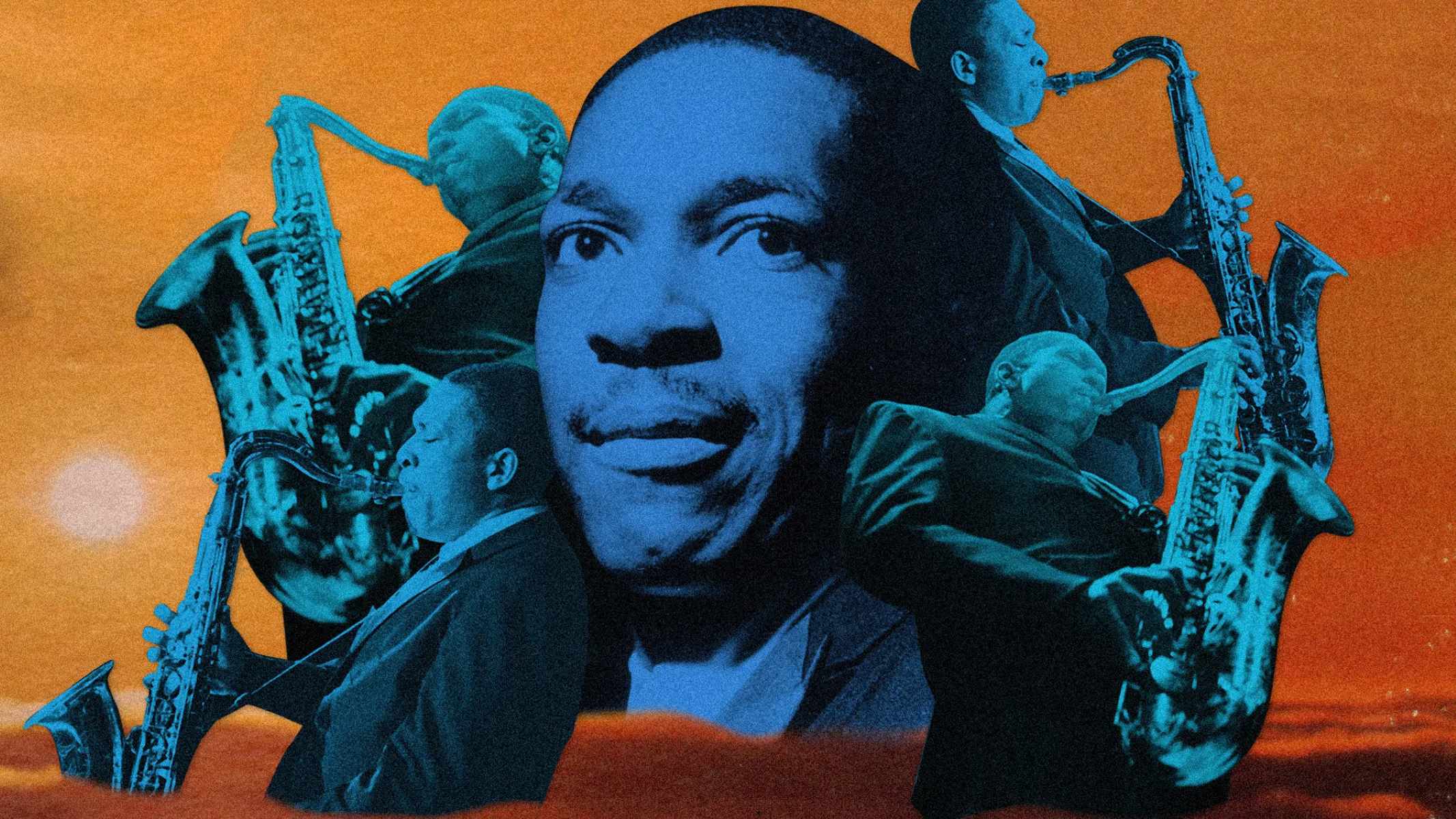Home>Production & Technology>Background Music>Why Is Background Music In A Game Important


Background Music
Why Is Background Music In A Game Important
Modified: January 22, 2024
Discover why background music is crucial in a game and its impact on the overall gaming experience. Enhance immersion, emotion, and engagement with well-crafted background music.
(Many of the links in this article redirect to a specific reviewed product. Your purchase of these products through affiliate links helps to generate commission for AudioLover.com, at no extra cost. Learn more)
Table of Contents
Introduction
Background music in a game plays a crucial role in creating a captivating and immersive experience for players. Just like in movies, the right music can enhance the overall atmosphere, evoke emotions, and provide cues that guide the player through the gameplay. It has the power to transport players to different worlds, evoke a sense of nostalgia, and increase their engagement and focus.
When done well, background music seamlessly blends with the gameplay, becoming an integral part of the gaming experience. It sets the tone and theme of the game, shapes the player’s emotional connection to the story and characters, and helps establish the overall mood and atmosphere. Furthermore, it can provide audio cues that enhance gameplay mechanics and contribute to a sense of timing and pacing.
In this article, we will explore the importance of background music in games and how it contributes to the overall gaming experience. By understanding its impact, game developers and designers can utilize music as a powerful tool in creating truly immersive and unforgettable gaming experiences.
Setting the Mood
One of the primary functions of background music in a game is to set the mood. The right music can instantly transport players to different environments, whether it’s a bustling city, a desolate wasteland, or a magical fantasy realm.
Imagine yourself stepping into a dark and eerie haunted house. The creaking floorboards, the distant whispers, and the haunting melodies accompanying your every step all contribute to the spine-chilling atmosphere. Without the right music, the sense of suspense and anticipation would be greatly diminished.
Similarly, in an action-packed game, dynamic and energetic music can create a sense of urgency, adrenaline, and excitement. It can accompany intense battles, high-speed chases, or dramatic moments, heightening the player’s immersion and making them feel like they’re right in the heart of the action.
On the other hand, soothing and peaceful music can be used to create a serene and calming atmosphere in puzzle or relaxation games. It allows players to unwind, focus, and solve challenges without distractions. The right music can help players enter a state of flow, where they become fully engrossed in the game and lose track of time.
Overall, the mood set by the background music greatly contributes to the player’s emotional experience. It sets the stage for the story, influences the player’s perception of the game world, and enhances their overall immersion. Whether it’s a horror game, an adventure game, or a puzzle game, the music sets the tone and sets the player up for an engaging and immersive experience.
Enhancing Player Immersion
Background music plays a vital role in enhancing player immersion in a game. By creating a seamless audiovisual experience, it allows players to fully engage with the game world and become emotionally invested.
When the music complements the game’s visuals, gameplay mechanics, and narrative, it helps create a cohesive and immersive experience. For example, in a fantasy RPG, epic orchestral music can transport players to a magical realm and make them feel like heroic adventurers. The music enhances the sense of scale and grandeur, making players feel like they are part of an epic journey.
In addition to complementing the game world, background music can also heighten emotional moments and character interactions. Imagine playing a story-driven game where a beloved character sacrifices themselves for the greater good. The accompanying music can intensify the emotional impact of the scene, making players feel sadness, empathy, or even a sense of loss. By connecting players with the characters and their experiences, the music contributes to a deeper and more meaningful gaming experience.
Moreover, well-crafted background music can help players suspend disbelief and fully immerse themselves in the game’s universe. It can effectively transport players to different time periods, cultures, or even fictional realms. The music provides a constant audio backdrop that reinforces the game’s setting and atmosphere, making players feel like they are truly part of that world.
Overall, background music is instrumental in enhancing player immersion by creating a seamless and immersive audiovisual experience. It adds depth, emotion, and a sense of realism to the game world, allowing players to fully immerse themselves in the gaming experience and escape into a world of fantasy and adventure.
Creating Emotional Connection
Background music in a game has the incredible ability to create and foster an emotional connection between players and the game itself. It has the power to evoke a wide range of emotions, from excitement and joy to sadness and nostalgia.
Music has a unique way of triggering emotional responses in our brains. It can heighten tension during intense moments, evoke a sense of wonder in exploration, or even bring tears to our eyes during a poignant scene. When the right music is paired with the right moments in a game, it can elicit strong emotional reactions and create lasting memories.
For instance, consider a heartfelt reunion between two characters in a game. The music swells with the emotion of the moment, emphasizing the joy and relief of their reunion. This can tug at the player’s heartstrings and strengthen their emotional investment in the story and characters.
Similarly, background music can evoke nostalgia and bring back memories from the past. It can take players back to their childhood or remind them of significant moments in their lives. By tapping into these emotions, the music helps players feel a deeper connection to the game and its world.
Furthermore, background music can also reinforce the themes and messages of the game. A game with a strong focus on hope and resilience may have uplifting and inspiring music that resonates with players. On the other hand, a game that explores darker themes may use haunting and melancholic music to create a sense of despair or uncertainty.
By creating an emotional connection, background music enhances the overall game experience. It allows players to empathize with the characters, become more invested in the story, and ultimately feel a deeper connection to the game itself. Whether it’s through the excitement of victory, the sadness of a loss, or the nostalgia of a familiar tune, the music becomes a gateway to the player’s emotions, enriching their gaming experience.
Increasing Engagement and Focus
Background music in a game serves a vital role in increasing player engagement and focus. It has the power to captivate and hold players’ attention, making them more invested in the gameplay and overall experience.
One way background music enhances engagement is by creating a sense of atmosphere and energy. The right music can make players feel like they are part of an exciting and dynamic world, whether it’s a fast-paced action game or a strategic puzzle game. The music adds a layer of excitement and intensity, drawing players deeper into the game’s challenges and objectives.
Additionally, background music can help players maintain focus and concentration during gameplay. It provides a constant sonic backdrop that helps block out distractions and immerse players in the task at hand. The repetitive and rhythmic nature of music can also create a sense of flow, allowing players to get into a state of optimal performance and enjoyment.
Moreover, background music can enhance the overall pacing of the game. By matching the tempo and intensity of the music to key moments in the gameplay, such as boss battles or puzzle-solving sequences, it adds a layer of excitement and anticipation. This effectively keeps players engaged and pushes them to strategize, react quickly, or think critically to succeed.
Furthermore, background music can provide important audio cues and feedback to players. It can signal the start of a new level, indicate the approach of enemies, or provide hints about hidden objects or secrets. This audio feedback helps players navigate the game world more efficiently, increasing their level of engagement and keeping them on their toes.
Overall, background music plays a significant role in increasing player engagement and focus. It creates a captivating atmosphere, helps maintain concentration, enhances pacing, and provides crucial audio cues. By utilizing the power of music, game developers can keep players deeply engaged in the gameplay and elevate the overall gaming experience.
Pacing and Timing
Pacing and timing are crucial elements in game design, and background music plays a vital role in shaping and enhancing these aspects. The right music can effectively control the tempo, rhythm, and overall flow of the gameplay, ensuring a dynamic and engaging experience for players.
One way background music contributes to pacing is through its ability to adjust the energy level of the game. In fast-paced action sequences, the music can match the intensity, driving players forward and heightening the adrenaline rush. Conversely, during quieter or reflective moments, the music can slow down, providing a sense of calm and allowing players to catch their breath.
The timing of the music cues is equally important. Well-placed musical cues can heighten the impact of significant events or actions in the game. For example, a triumphant fanfare as a player achieves a major milestone can amplify the feelings of accomplishment and satisfaction. Similarly, a sudden shift in the music to a more ominous tone can foreshadow a looming threat or surprise, creating suspense and anticipation.
Background music can also help guide the pace of the gameplay itself. In platformers or rhythm games, the music’s beat can serve as a cue for players to time their jumps or button presses. This synchronization between the music and gameplay mechanics creates a seamless and immersive experience, where players are directly connected to the rhythm of the game.
Furthermore, background music can be used strategically to influence player behavior and decision-making. For example, in stealth games, the music can become more tense and suspenseful as enemies grow closer, subtly encouraging players to be cautious and stealthy. In racing games, an upbeat and energetic soundtrack can motivate players to push harder and maintain a fast pace.
The careful balance of pacing and timing in background music can significantly impact the player’s experience. It can create a sense of urgency, anticipation, or relaxation, leading to a more immersive and enjoyable gameplay journey. By leveraging the power of music, game developers can effectively shape the rhythm and flow of the game, maximizing player engagement and enjoyment.
Providing Audio Cues and Feedback
Background music in a game plays a crucial role in providing audio cues and feedback to players. Through carefully designed soundscapes and musical motifs, it can convey important information, guide players, and enhance their understanding of the game world.
One of the primary functions of background music is to communicate the atmosphere and mood of the game. Whether it’s a cheerful and lighthearted tune in a whimsical platformer or a dark and ominous melody in a horror game, the music sets the tone and helps players understand the game’s intended emotional experience.
In addition to setting the atmosphere, background music can also provide important audio cues for gameplay mechanics. For example, in a stealth game, the music may become more intense as the player is closer to being detected by enemies. This audio feedback alerts players to adjust their strategies and take appropriate actions to avoid being caught.
Similarly, background music can indicate the presence of threats or enemies. In an action game, a sudden shift in the music to a more aggressive and dynamic tone can signal the approach of adversaries, prompting players to be prepared for combat. This audio cue helps players react swiftly and effectively in the game’s fast-paced environment.
Furthermore, background music can provide feedback on the player’s performance. For example, in a rhythm game, the music’s tempo and rhythm can directly respond to the player’s accuracy and timing of button presses, giving immediate audio feedback on their success or failure. This synchronization between the music and gameplay mechanics enhances the player’s sense of accomplishment and helps them refine their skills.
Background music also aids in creating a more immersive and believable game world. Ambient and environmental sounds, combined with the music, can enhance the sense of realism and presence. The sound of birds chirping or waves crashing in a beach scene, for instance, adds depth and richness to the player’s audio experience, making the game world feel more alive.
Overall, background music serves as a powerful tool in providing audio cues and feedback to players. It sets the atmosphere, alerts players to threats or challenges, provides feedback on performance, and contributes to the overall immersion in the game world. By utilizing the potential of sound and music, game developers can enhance the player’s understanding, engagement, and enjoyment of the game.
Preventing Silence or Awkwardness
Background music in a game also serves the important role of preventing silence or awkwardness during gameplay. Silence can create a sense of emptiness or detachment, while awkwardness can make players feel uncomfortable or disengaged. By providing a constant audio backdrop, background music keeps the experience engaging and immersive.
During moments of inactivity or exploration, having background music helps fill the void and maintain a sense of momentum. For example, in an open-world game, as players traverse vast landscapes or explore intricate dungeons, the music can provide a consistent audio companion that prevents the game world from feeling empty or lifeless. It adds depth and richness to the environment, creating a more immersive experience for players.
Moreover, background music can help smooth the transition between different gameplay segments. It can bridge the gap between cutscenes, loading screens, or other non-interactive elements, creating a seamless experience for players. By maintaining a continuous audio presence, the music prevents jarring shifts in atmosphere and keeps players emotionally connected to the game during transitional moments.
In addition, background music can enhance the overall flow of the game and eliminate awkward moments. For example, during dialogue sequences, the music can fade into the background, creating a soft sonic backdrop that supports the conversation without overpowering it. This helps maintain a natural and comfortable atmosphere, ensuring that dialogues and interactions flow smoothly.
Furthermore, background music can also contribute to the pacing and timing of gameplay events. It helps seamlessly transition between different sequences, preventing abrupt shifts that could disrupt the player’s immersion or confuse their understanding of the game’s narrative or mechanics. By providing a consistent audio presence, background music ensures a cohesive and polished gameplay experience.
Overall, background music plays a vital role in preventing silence or awkwardness during gameplay. It fills the gaps, maintains momentum, smooths transitions, and enhances the overall flow of the game. By keeping players engaged and immersed in the experience, background music contributes to a seamless and enjoyable gaming journey.
Setting the Game’s Tone and Theme
Background music in a game is instrumental in setting the tone and theme of the overall experience. It serves as a powerful tool for establishing the desired atmosphere, emotions, and aesthetics that align with the game’s narrative and gameplay.
Through the careful selection of musical styles, genres, and instruments, background music can immediately convey the intended tone of the game. For example, a game set in a futuristic sci-fi world may employ electronic and synthesizer-based music to create a sense of technological advancement and otherworldliness. In contrast, a game with a medieval fantasy setting may feature orchestral arrangements, evoking a sense of adventure and heroism.
Background music can also reflect the underlying themes of the game, reinforcing its core messages and concepts. For instance, a game with themes of hope and resilience may utilize uplifting melodies and inspiring harmonies in its music. On the other hand, a game exploring darker and more introspective themes may employ haunting and melancholic compositions.
The use of leitmotifs and recurring musical motifs can further enhance the game’s tone and theme. These motifs serve as musical identifiers for characters, locations, or key story elements, providing a sense of cohesion and familiarity. By utilizing this technique, background music can strengthen the emotional connection between players and the game world, adding depth and resonance to the overall experience.
Furthermore, background music can enhance the immersion in the game’s unique world and culture. It can incorporate cultural or regional influences, using instruments, melodies, or rhythms that reflect the game’s setting. By doing so, the music not only establishes the tone but also provides a rich and authentic backdrop that contributes to the game’s sense of place and identity.
In essence, background music plays a crucial role in setting the tone and theme of a game. It provides the emotional and atmospheric backdrop that aligns with the game’s narrative, gameplay, and overall artistic vision. By conveying the intended emotions, reinforcing the underlying themes, and creating a cohesive audiovisual experience, background music encapsulates the essence of the game, leaving a lasting impression on players.
Conclusion
Background music in a game is far more than just a mere addition to the audio experience; it is a powerful tool that enhances the gameplay, creates immersive atmospheres, and fosters emotional connections with players. The carefully crafted melodies, rhythms, and arrangements weave seamlessly into the gaming experience, setting the mood, enhancing immersion, and guiding players through their journey.
From setting the tone and theme of the game to creating emotional connections, background music evokes a range of emotions, whether it’s excitement, nostalgia, fear, or triumph. It serves as a conduit for storytelling and character development, intensifying dramatic moments and evoking a deeper sense of empathy and engagement.
Background music also plays a pivotal role in increasing player engagement and focus. It maintains momentum during lulls and prevents silence or awkwardness, keeping players fully invested in the gameplay and the world that surrounds them. It provides audio cues and feedback, guiding players through the experience and ensuring they don’t miss important elements or events.
Furthermore, the strategic use of background music helps control the pacing and timing of the game, ensuring a smooth and dynamic flow. It prevents jarring transitions and helps synchronize players with the events and challenges they face, enhancing their sense of immersion and agency.
In conclusion, background music in games is a fundamental element that integrates with every aspect of the player’s experience. It sets the atmosphere, guides emotions, enhances immersion, and provides vital audio cues. By recognizing the importance of background music and harnessing its potential, game developers can create truly captivating, immersive, and unforgettable gaming experiences for players around the world.











